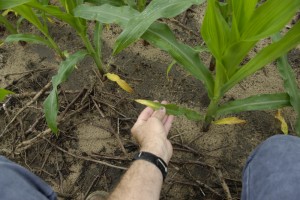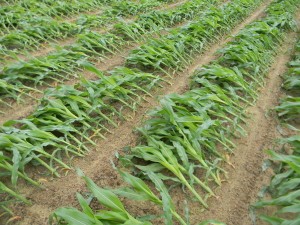With all the rain we have had lately, there have been many negative impacts on crops, both in the Southeast and in other parts of the country. Here are a few of the stories I have seen.
Rome Ethredge of Seminole County E News pointed out that not only did the rains make it hard for farmers to get into the fields, but they also leached fertilizers below the root zone of crops like corn. This is leading to deficiencies in nitrogen and potassium at a time that is critical for development of corn to get the maximum yield. He has some good pictures of damage to young corn plants due to nutrient deficiencies here. He also points out that if the soils are saturated it makes it hard for the corn plants to take up the nutrients even if they are available. Some farmers are resorting to aerial applications of fertilizer due to the wet field conditions.
Rome pointed out in a separate post that fusarium head scab, a fungal disease, is starting to show up in wheat again this year. It was widespread last year after all the April rain and this year’s rains are not helping either. You can read about this here as well as view some pictures of what it looks like. He’s got a new publication with details about this disease at https://seminolecropnews.wordpress.com/2015/04/22/fusarium-head-blight-scab-of-wheat-in-georgia/.
Andy Shirley of Mitchell County Extension posted an article on his blog this week by Dewey Lee, UGA Extension corn agronomist, on issues with corn due to a variety of weather conditions. Dewey noted that not only has the rain and cloudy conditions caused problems with fertilizer migration and uptake, but high winds from recent storms has also caused the corn stalks in the wet soil to blow over or lodge, leading to temporary exposure of the corn’s nodal roots.
Brad Haire of the Southeast Farm Press wrote an article this week about options that farmers might be able to use in planting if delays due to wet fields hold up corn planting this year. You can read that article here. He also notes that the newer hybrids have different nitrogen uptake characteristics and farmers need to be especially careful about fertilization schedules with newer hybrids and all this rain.

